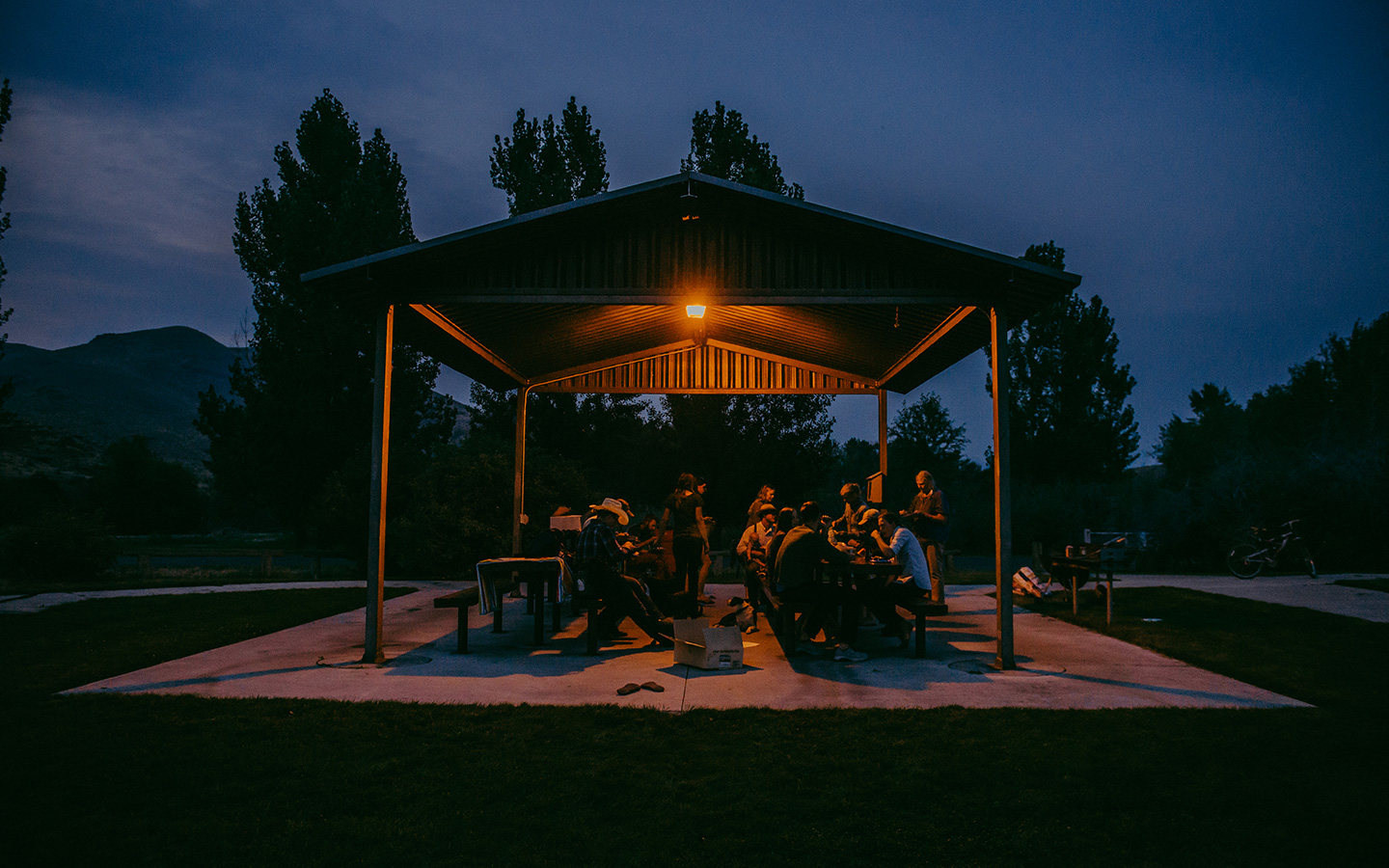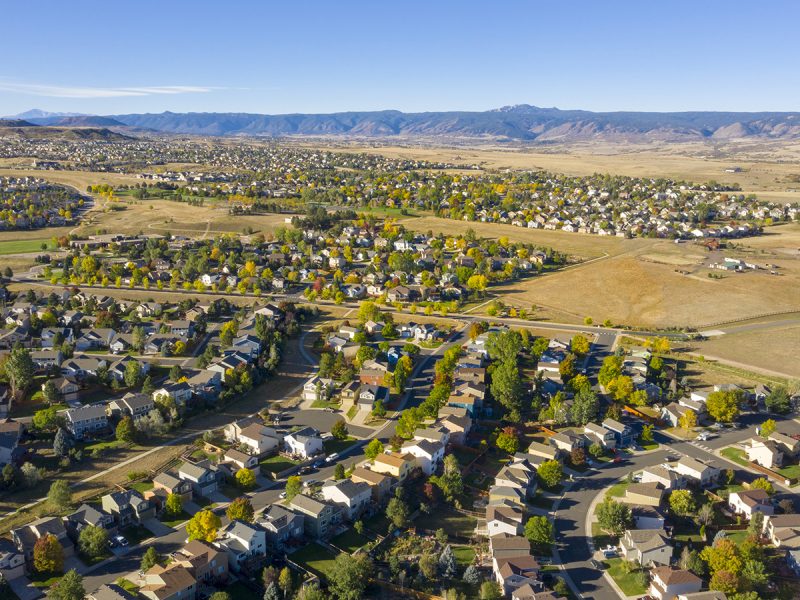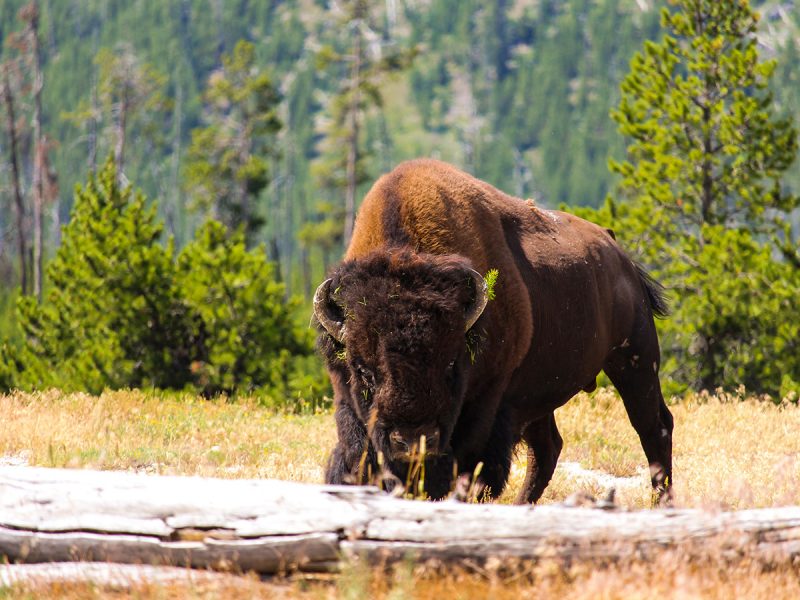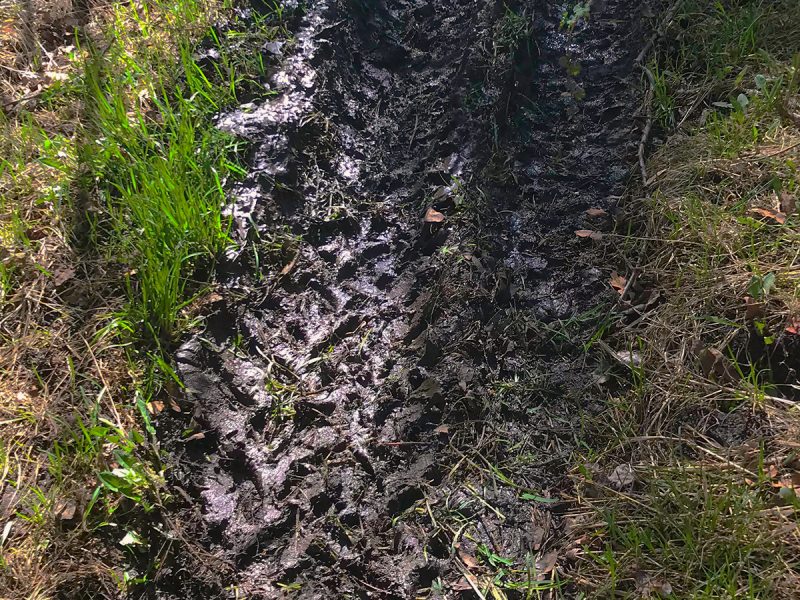Community in Food – Glenn’s Perfect Burger
We don’t always cook in cow camp. Sometimes we gather in the evenings at a little-known campground about 15 minutes from the ranch. There’s not much there: just picnic tables under a simple pavilion along Idaho’s wild Salmon River.
While the grill is heating, Ethan pulls out his guitar, Becky her mandolin. In a few minutes, there is music. Usually a rendition of “Folsom Prison Blues” or Gillian Welch’s “Tear My Stillhouse Down.” They play bluegrass. Always emphasis on the “Blue.”
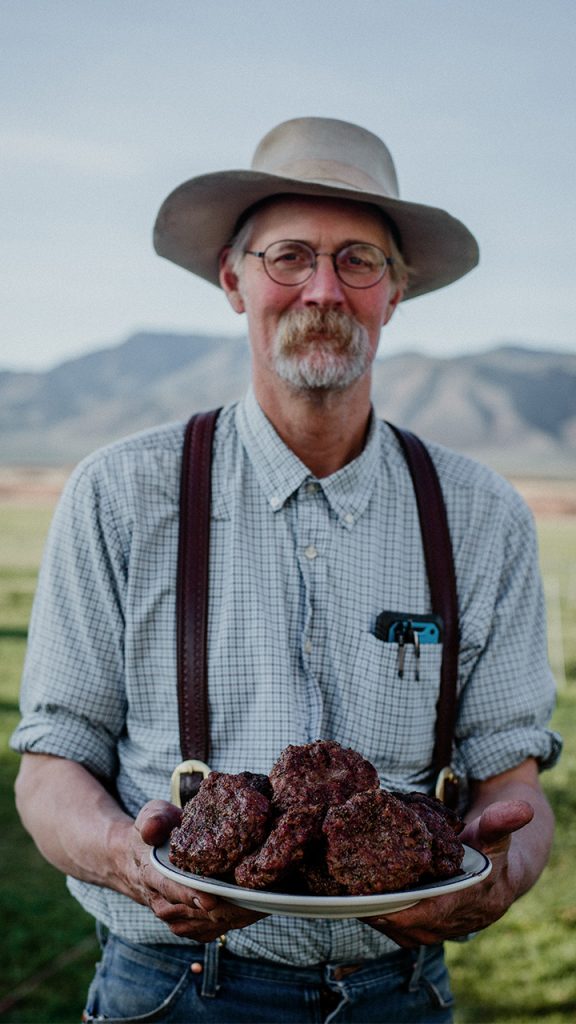
Over the years, there have been a number of additional people. Friends and relatives have gathered together in the pavilion. We’ve welcomed summer range riders, who sit at a distance at first…until they feel comfortable. We’ve been told that we’re a loud family, a little overwhelming.
But there’s a camaraderie that comes with eating a meal together. Maybe it’s because eating is such an ordinary activity. Everyone eats! Or maybe it’s the long summer of hard work together that makes us comfortable. After days in a saddle at both your best and your worst, you have to eventually relax around each other.
And also, our crew members start to understand.
They’ve looked down on the ground, seen the wild plants and the ecosystem that makes up our rangelands. At first, it might seem that there’s not much out there in this bare desert country. It’s only after those hours riding in it that the whole picture begins to appear, of complexities and nuance in landscape. By putting both cowboy-booted feet on the ground, you begin to develop a sense of the world—and of your place in it.
There is a complete circle between these volcanic soils at our feet and those summer evenings grilling burgers by the Salmon River. It includes us, our tenacious range riders and our animals. It includes the land this food comes from. It circles back to barbecues, to the burger that Glenn is flipping.
The food we eat heals us, nourishes us, and enriches our lives. Food is a bonding place. What a privilege it is for us to know the ground our beef is raised on. To set foot on the same soil as them.
Food and cooking not only bonds us with the people in our lives that we’re glad to clink beers with. It gives us that connection back to the wild places.
So join us at our table, and serve up a burger Glenn’s way. There’s plenty to go around.
Glenn’s Perfect Burger
Ingredients
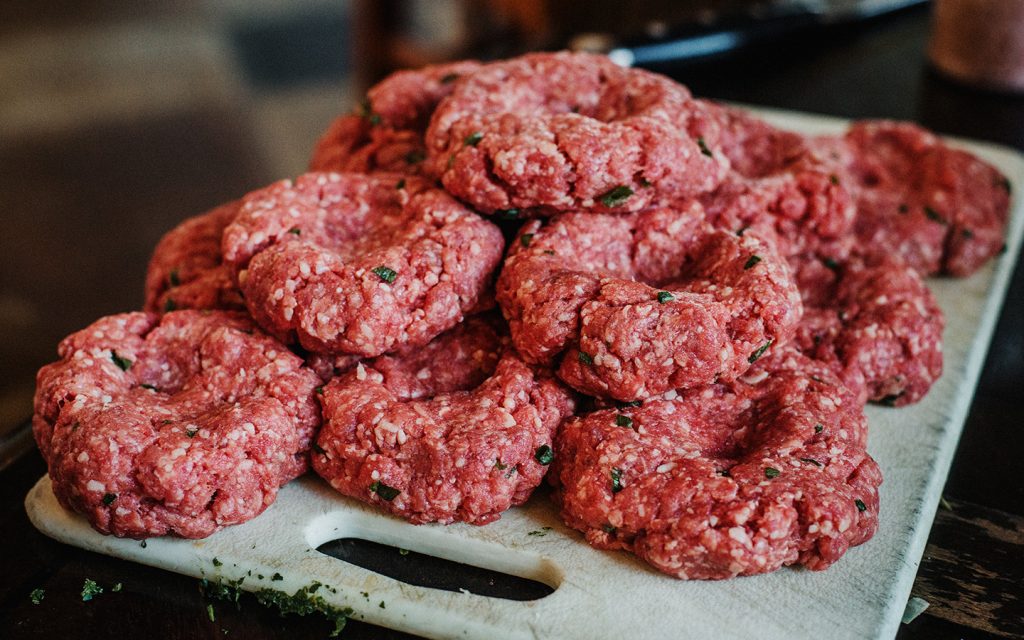
- Ground beef, preferably slightly fattier at 80/20 leanness, thawed to room temperature (still-cold meat won’t cook evenly). It’s also nice to have beef from a source and processor you fully trust.
- Coarse sea salt
- Coarse ground black pepper
- Fresh garden chives or wild onions, finely chopped
- Good aged cheddar cheese (6-12 months)
- Buns and fixings
Instructions
- Heat up your grill or fire. We use charcoal and quite like mesquite or hickory. Your charcoal is ready when every briquet is 75% or more whitish gray instead of red. If you’re using a fire, position the grate over the fire so it’s not directly in the flame but is over some good hot coals or logs.
- Remove the ground beef from the package and place in a large bowl. Add the chives. Now begin breaking the meat apart without compressing it, sort of “fluffing” it up. This will get rid of the compression caused when it was packaged and bring air back into the burger. These air pockets will later fill with juice and are what makes the difference for a truly juicy, tender burger.
- Once the meat is “fluffed up,” shape the burgers lightly into rounds, again remembering that compressing or handling too much is the fastest way to reduce tenderness in the finished burger. Quietly send the obsessive or control freak burger shapers off to fetch another drink.
- Once formed into rounds, press your finger into the center of the burger to form a small indent on both sides. This will disappear during cooking as the burger expands slightly, but helps make for more even cooking throughout. It’s all about surface area exposed to heat. Edges will cook faster in thick-centered burger, so the indent helps mitigate that.
- Place the shaped burgers on a plate.
- Sprinkle liberally with salt and pepper, then gently pat in the salt and pepper. Place the burgers on the hot grill, flipping them over as you do so the seasoned side is facedown.
- Sprinkle salt and pepper over the unseasoned side that is facing up.
- If you’re using a grill, cover it. Otherwise, if you’re cooking over a fire, don’t worry about covering because you have enough heat contained within the fire to compensate for this.
- Allow to cook for a few minutes on the first side. Ideally, you only want to have to flip these once, because the more you flip, the more juices you’ll lose. So wait until one side is fully cooked before flipping. When there is a good collection of juices on the top of the burger, that’s a sign it’s ready to turn.
- Continue to cook for another few minutes. At this point you can use the finger test to determine doneness. If it has the same tension as when you press on your cheek, it’s not done. If your nose, it’s almost done. If your chin, you’re about there! Glenn adds slices of cheese to the burgers right about at “nose” consistency. Some prefer cheese on top, some don’t, so ask your eaters!
- When burgers are done, remove from heat and place on a plate. If you’re still not sure if they’re done, you can always cut one in half and look. Glenn prefers a pretty pink burger, but again, ask your eaters what they want.
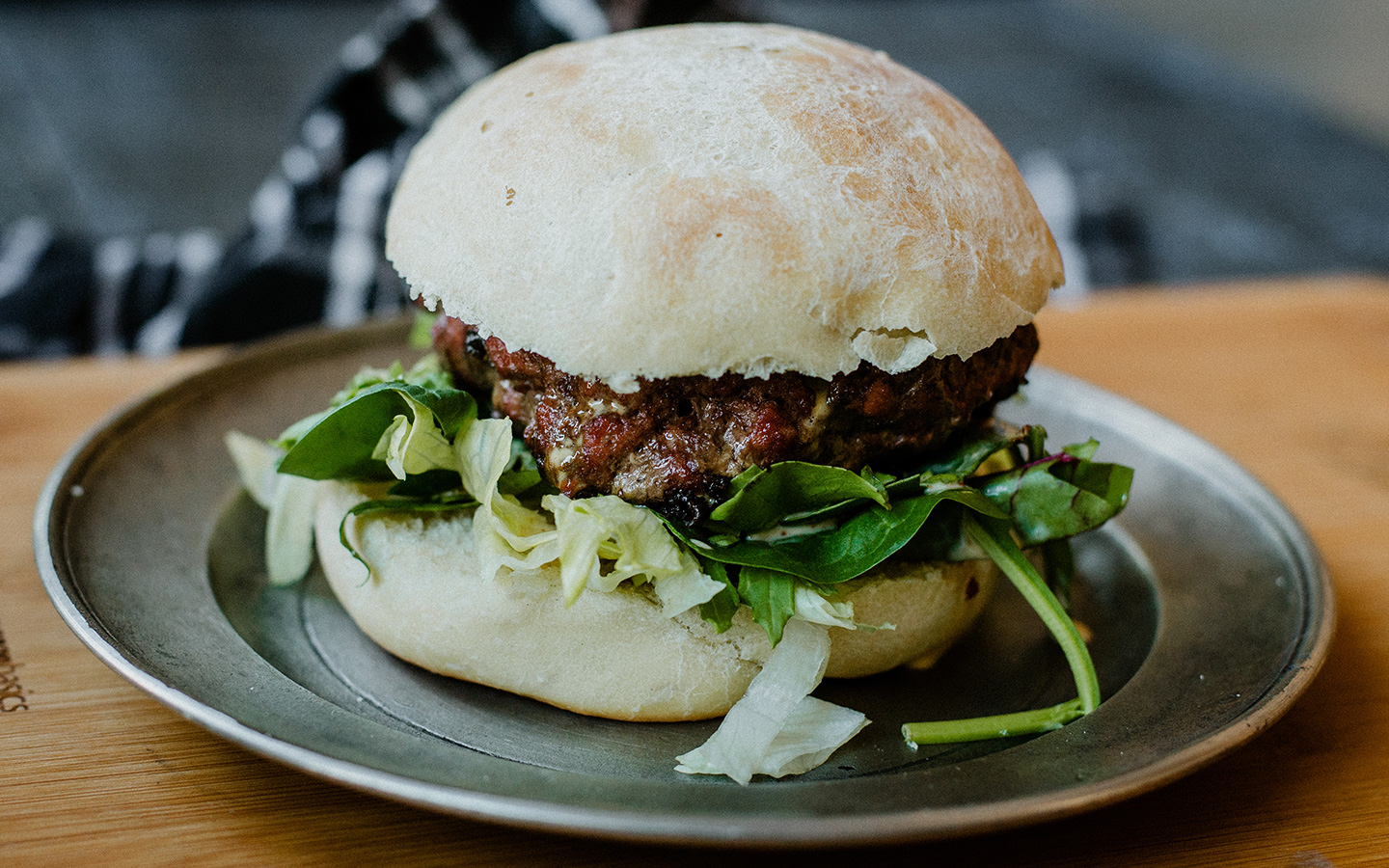
Photos by Melanie and Linnaea Elzinga.


